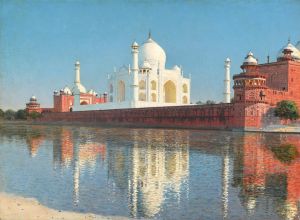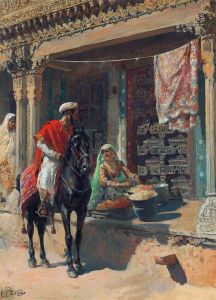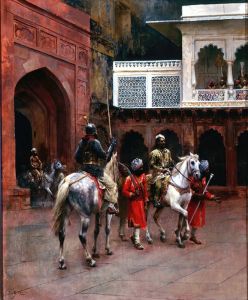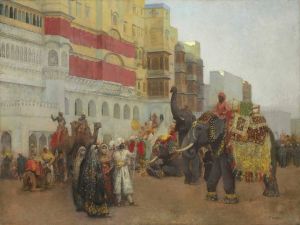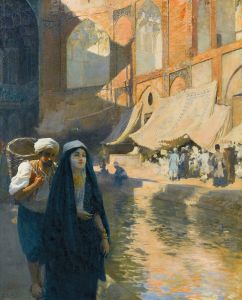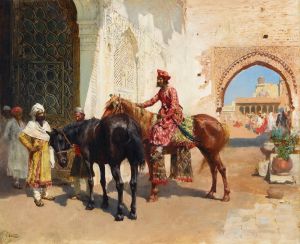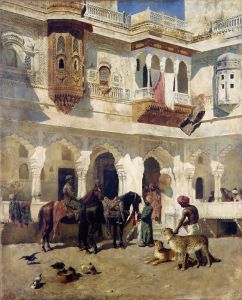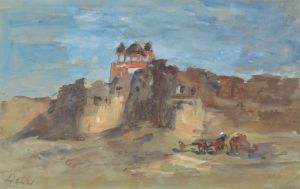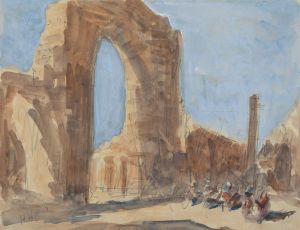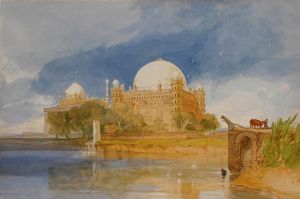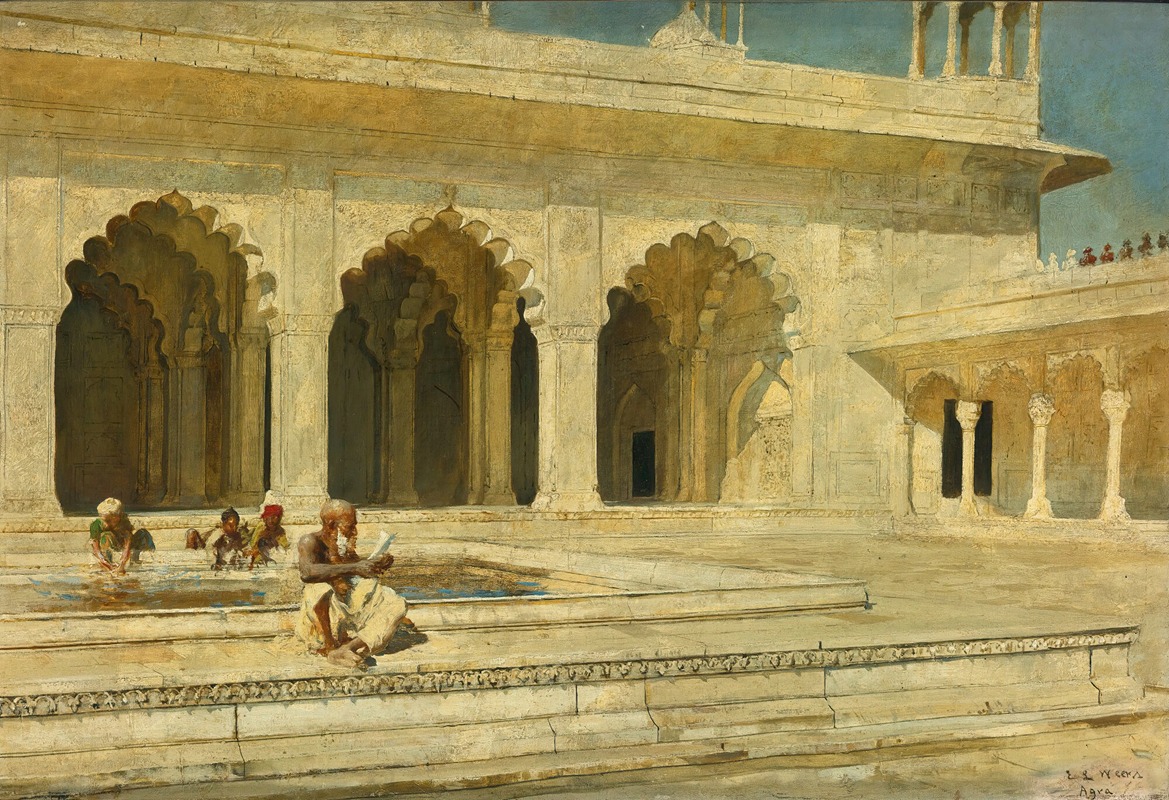
The Pearl Mosque, Agra
A hand-painted replica of Edwin Lord Weeks’s masterpiece The Pearl Mosque, Agra, meticulously crafted by professional artists to capture the true essence of the original. Each piece is created with museum-quality canvas and rare mineral pigments, carefully painted by experienced artists with delicate brushstrokes and rich, layered colors to perfectly recreate the texture of the original artwork. Unlike machine-printed reproductions, this hand-painted version brings the painting to life, infused with the artist’s emotions and skill in every stroke. Whether for personal collection or home decoration, it instantly elevates the artistic atmosphere of any space.
Edwin Lord Weeks was an American artist known for his Orientalist paintings, which often depicted scenes from his travels in the Middle East, North Africa, and South Asia. One of his notable works is "The Pearl Mosque, Agra," which captures the intricate beauty and architectural splendor of the mosque located within the Agra Fort in India.
The Pearl Mosque, also known as the Moti Masjid, is a significant historical and architectural landmark. It was commissioned by the Mughal Emperor Shah Jahan, who is also known for building the Taj Mahal. The mosque was constructed between 1648 and 1654 and is renowned for its purity and elegance. It is called the Pearl Mosque because of its pristine white marble, which gives it a pearl-like appearance. The mosque is located within the Agra Fort complex, which is a UNESCO World Heritage Site.
Weeks' painting of the Pearl Mosque reflects his keen interest in capturing the essence of the places he visited. His works are characterized by their attention to detail, vibrant use of color, and the ability to convey the atmosphere of the scene. In "The Pearl Mosque, Agra," Weeks likely focused on the architectural elements of the mosque, highlighting its domes, arches, and the serene ambiance of the interior courtyard.
Weeks was part of a broader movement of Orientalist artists in the 19th century, who were fascinated by the cultures and landscapes of the East. His travels to India provided him with ample inspiration and material for his paintings. He was known for his ability to depict the light and color of the region, bringing to life the rich textures and intricate designs of the architecture he encountered.
The Pearl Mosque itself is a fine example of Mughal architecture, which is characterized by its symmetrical design, use of marble, and intricate carvings. The mosque features three domes and a large courtyard, which would have been used for prayer. The interior of the mosque is simple yet elegant, with a focus on creating a space that is both functional and aesthetically pleasing.
Weeks' painting would have captured these elements, showcasing the mosque's beauty and the skill of the craftsmen who built it. His work serves as a historical record of the mosque's appearance in the late 19th century, providing insight into how it was perceived by Western artists at the time.
Overall, "The Pearl Mosque, Agra" by Edwin Lord Weeks is a testament to the artist's fascination with the architecture and culture of India. It reflects both the grandeur of Mughal architecture and the Western artistic perspective of the time. Through his painting, Weeks contributed to the broader appreciation and understanding of Indian architecture in the Western world.







